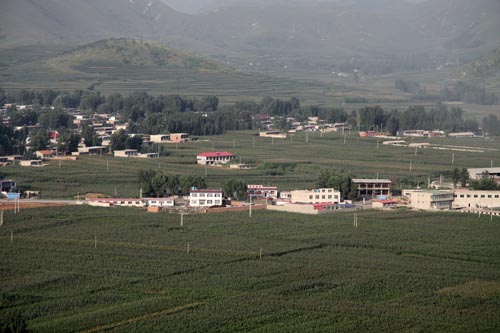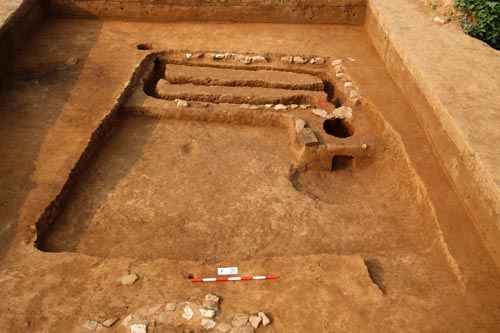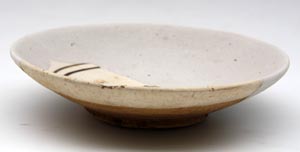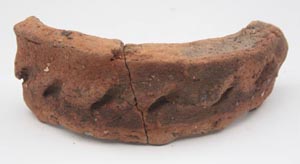New achievement at Shijiaying site, Fengrun, Hebei Province
The Shijiaying site in Fengrun was excavated by the Hebei Provincial Institute of Culture Relics, etc. on 1st August, 2011. According to the result of surface survey and exploration, the area of the site totally covers 9ha, with 300 meters both in East-West and South-North respectively. The archaeological team laid out squares in the section of the west district of the site and did excavation there where rich cultural deposits were discovered. Moreover, the latest technological methods were used in order to acquire the comprehensive ancient cultural information, and further to understand the situation of the cultural deposit there and its cultural connotation.

The Shijiaying Culture includes the cultural remains dating to Shang, Han, Jin and Yuan, Ming and Qing dynasties, respectively. Up to now, the archaeological team totally disclosured 600 square meters, and found 21 ash pits and 11 residential remains. Moreover, there were over 100 artifacts with various materials unearthed, such as pottery, ceramic, bronze and stone etc. The artifacts include pottery li 鬲 tripods, pottery weng 瓮 urn, pottery pen 盆basin, ceramic wan 碗 bowl, ceramic pan 盘 plane, pottery guan 罐 jar, bronze coin, stone balls etc.

The first phase of the Shijiaying site can be dated to the early Shang dynasty, mainly including residential remain F11, ash pit H18 and H21. F11 was a semisubterranean residential remains, in the north part of which a kitchen range, strip in flat shape but only the fireplace and fire door remained, was discovered next to the north wall. The unearthed artifacts during to this phase were mainly red-brown sand clay pottery and a few grey fine clay pottery, red body with black coat clay pottery. And the ornamentation during this phase were mainly thin cord pattern, and a few string pattern, additional heap pattern, veining pattern and so on. Moreover, the identifiable pottery types were inverted rim basin, wide flared mouth urn, thick conical feet tripods, folded shoulder jar, no-grate yan甗 steamer, etc. In addition, the typical artifacts during this phase, such as thick conical feet tripods, folded shoulder jar, are basically same as those from the Fengshansi site in Qian’an, so this phase should be included among the lower Guye culture. In sum, the first phase of the Shijiaying culture supplied important materials for studying the cultural exchange between the lower Xiajiadian culture in the north of Yan Mountain and the Datuotou culture in the Haihe River reaches.

The second phase can be dated to Han dynasty, mainly including H11, H15 and another four ash pits and No.3 layer of cultural deposit. Among the ash pits, most were irregular in shape and naturally formed but were filled with human activities’ refuses. The artifacts during this phase were mainly grey fine clay pottery, and a few grey sand clay pottery and red clay pottery. In addition, there were string pattern, net pattern and other ornamentation, but most was mainly cord pattern. In addition, the identifiable pottery types were urn, basin and jar etc.

The third phase can be dated to Jin and Yuan dynasties, mainly including F1, F3 and another 10 residential remains, H1 and another 15 ash pits. The ten residential remains were semisubterranean and facing to the south. These ten residential remains were square in shape with 3-5.5 meters long in south-north and 2-4.6 meters wide in east-west with the doors mostly locating in the corner of southeast the residential remains. And their fire pits located in the north part of the residential remains, including a fire stove, a flue and a chimney etc. with the white, grey-white flat mudstone covering the most fire pits and the flues. These residential remains may have been used for long time according to the red sintering surface in the fire pits and the thick soot trace on the flues. While the ash pits were generally oval, rectangular and irregular shapes and there were large number of shards of fine clay pottery, white glazed porcelain, glaze sauce porcelain. In addition, the artifacts unearthed during this phase include rounded rims grey clay pottery jar with double hooks on the shoulder, square rim clay pottery basin with a bell mouth and tilt belly, and apex rounded rim white glazed porcelain bowl with arc belly etc. The ten residential remains, which had similar shape and layout along south-north axis, might have been an ancient human densely arranged settlement dating to the Jin and Yuan dynasties. If that is the case, they can supply important materials for studying the residential remains development in the east part of Hebei province during the Jin and Yuan dynasties. Up to now, this excavation basically understood the layout and structure of the settlement of the ancient people in the Shijiaying site. It will play an import role in studying the structure of the ancient settlement and its surrounding ecological environment.

Also there were over 150 pieces of animal bones discovered during the third phase. The species of the animal bones include cattle, sheep, dog, horse and pig etc. These animals were mostly domestic but with low proportion of wild species, especially the bones of pigs, sheep and dogs were the most, so that cultivation could have been the dominant in the economy of the settlement. Along the further study on these animal bones, more cultural information, which is related to the economic development pattern and the surrounding environmental development in the hilly region of the east foot of Yan Mountain, would be acquired.
The fourth phase of the Shijiaying site can be dated to the Ming and Qing dynasties. Only a few artifacts were unearthed, including blue and white porcelain bowl, glaze sauce coarse body pottery urn and roll rim basin, etc.
The next step for the archaeological team is to excavate westward in the site and understand the layout in the center of the settlement. At the same time, it should be strengthened to discuss the ecological environment and related subsidiary facilities surrounding the ancient settlement. Along the archaeological excavation developing, more ancient artifacts and remains will be acquired.
(Translator: Zhai Shaodong)

